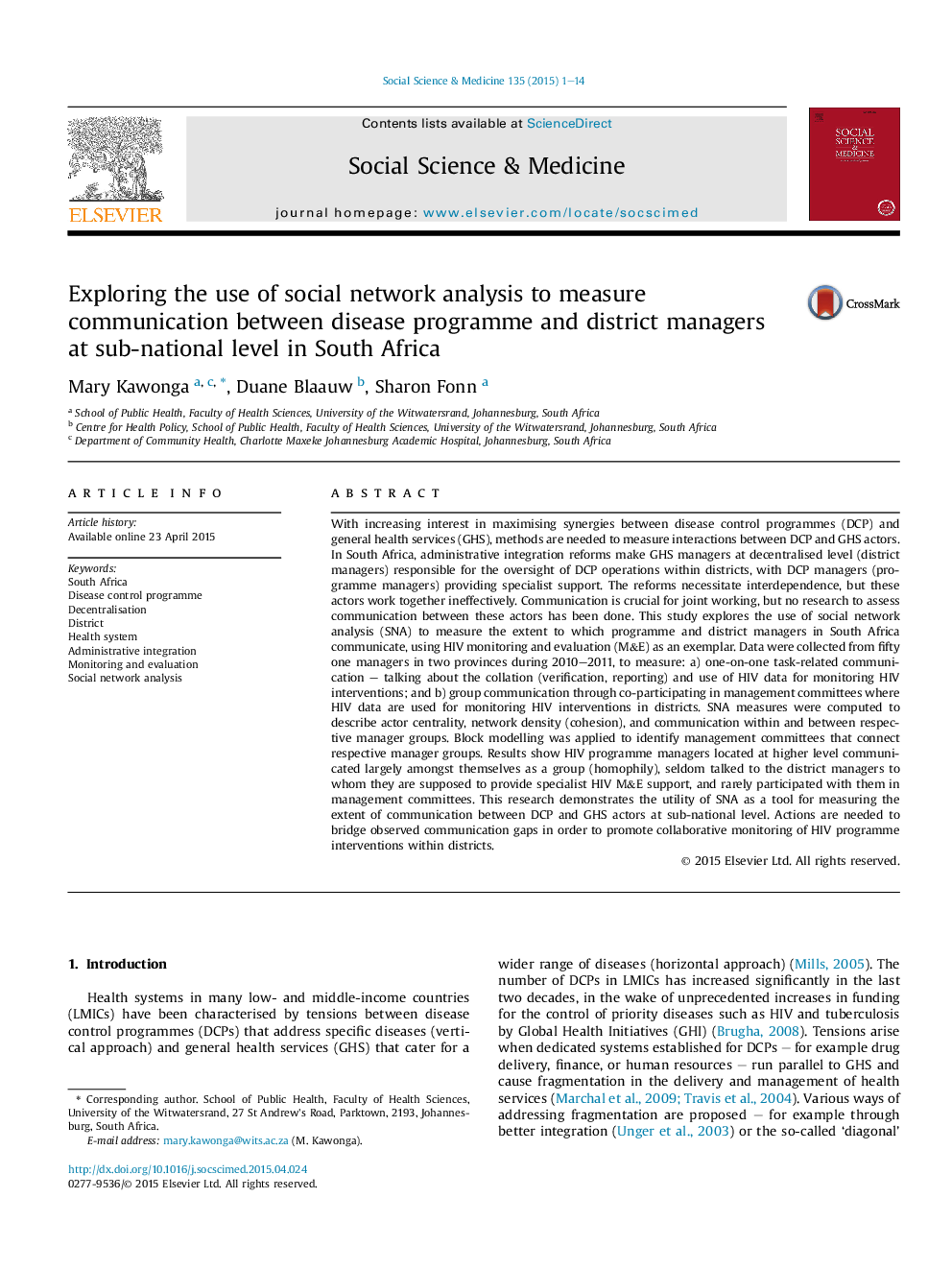| Article ID | Journal | Published Year | Pages | File Type |
|---|---|---|---|---|
| 7332222 | Social Science & Medicine | 2015 | 14 Pages |
Abstract
With increasing interest in maximising synergies between disease control programmes (DCP) and general health services (GHS), methods are needed to measure interactions between DCP and GHS actors. In South Africa, administrative integration reforms make GHS managers at decentralised level (district managers) responsible for the oversight of DCP operations within districts, with DCP managers (programme managers) providing specialist support. The reforms necessitate interdependence, but these actors work together ineffectively. Communication is crucial for joint working, but no research to assess communication between these actors has been done. This study explores the use of social network analysis (SNA) to measure the extent to which programme and district managers in South Africa communicate, using HIV monitoring and evaluation (M&E) as an exemplar. Data were collected from fifty one managers in two provinces during 2010-2011, to measure: a) one-on-one task-related communication - talking about the collation (verification, reporting) and use of HIV data for monitoring HIV interventions; and b) group communication through co-participating in management committees where HIV data are used for monitoring HIV interventions in districts. SNA measures were computed to describe actor centrality, network density (cohesion), and communication within and between respective manager groups. Block modelling was applied to identify management committees that connect respective manager groups. Results show HIV programme managers located at higher level communicated largely amongst themselves as a group (homophily), seldom talked to the district managers to whom they are supposed to provide specialist HIV M&E support, and rarely participated with them in management committees. This research demonstrates the utility of SNA as a tool for measuring the extent of communication between DCP and GHS actors at sub-national level. Actions are needed to bridge observed communication gaps in order to promote collaborative monitoring of HIV programme interventions within districts.
Keywords
Related Topics
Health Sciences
Medicine and Dentistry
Public Health and Health Policy
Authors
Mary Kawonga, Duane Blaauw, Sharon Fonn,
